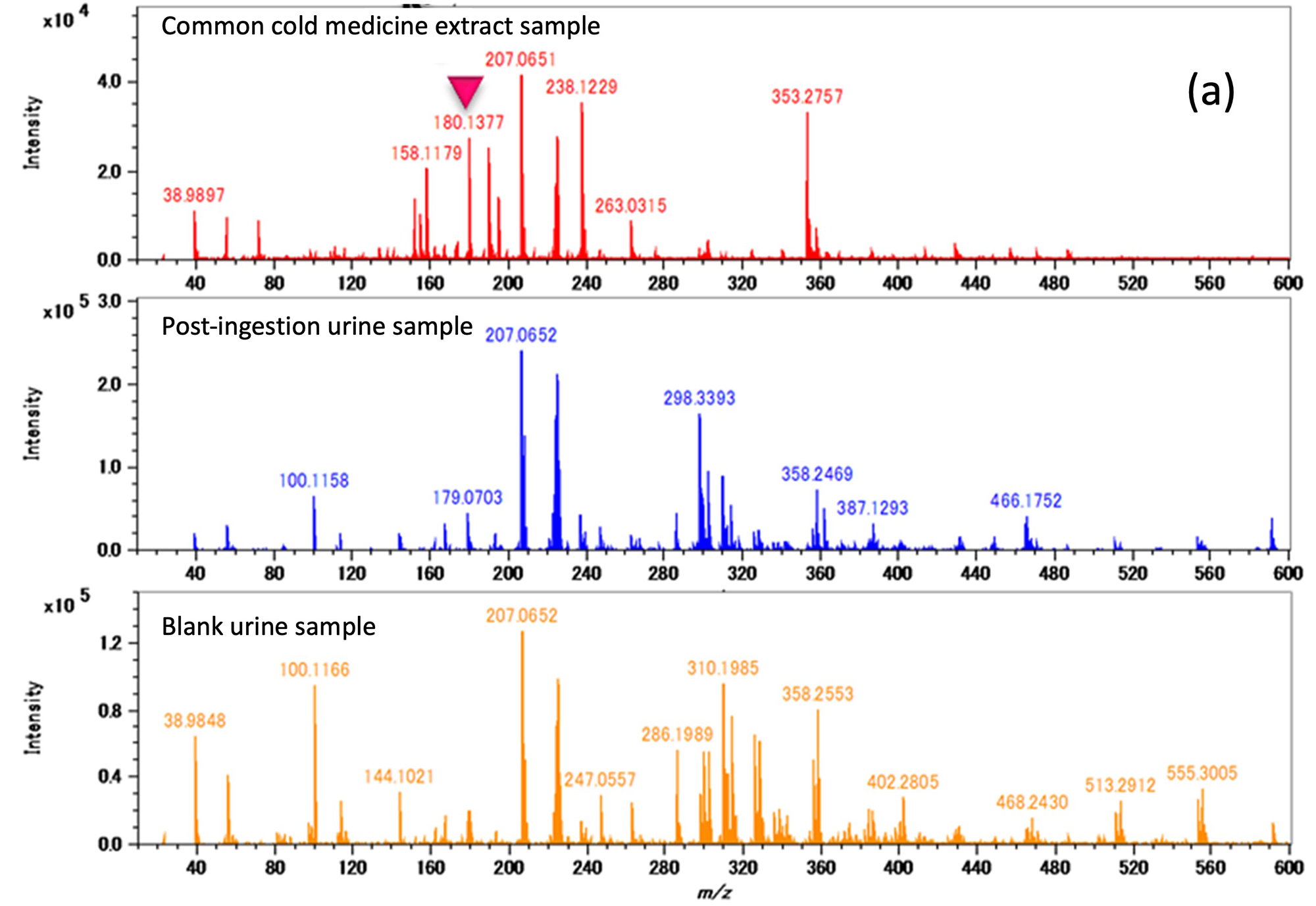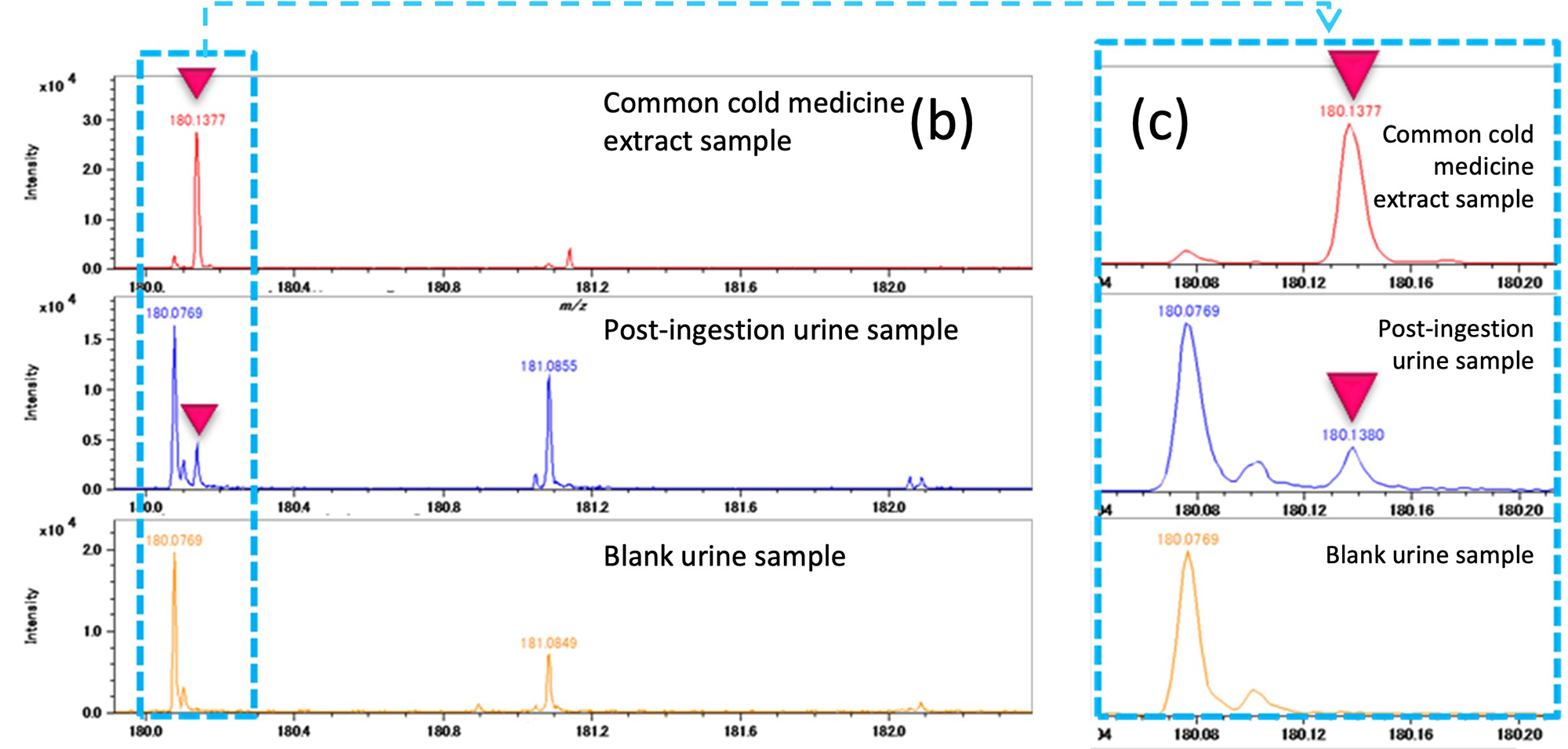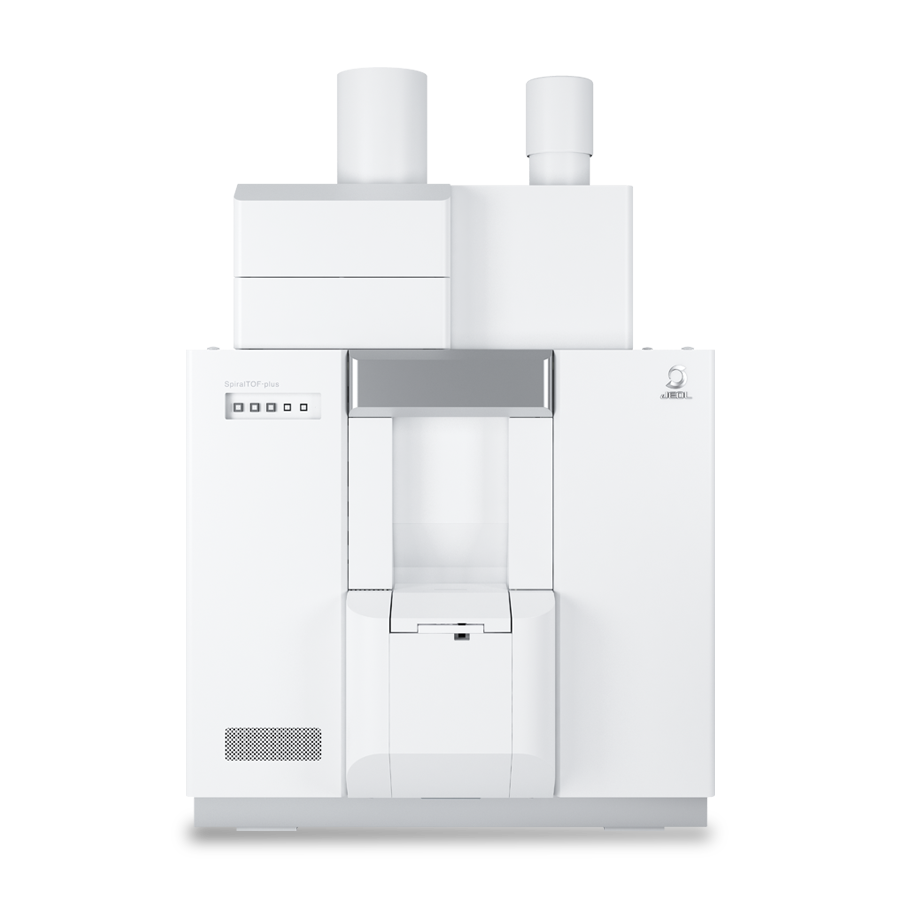Analysis of a drug in urine by JMS-S3000 "SpiralTOF™" and TOF-TOF option
MSTips No. 263
Introduction
Matrix-assisted laser desorption/ionization (MALDI) uses small organic compounds called matrices as ionization promoters. MALDI is often used with a reflectron time-of-flight mass spectrometer (TOFMS), but it is generally considered difficult to measure low molecular weight organic compounds of 500 Da or less. The reason is that MALDI ionizes not only the target compound but also the matrix and other interferences. In the low-molecular-weight region, the peaks of the matrix and interferences and the peaks of the target compound are mixed, but it is difficult to separate them due to the insufficient mass resolution of reflectron TOFMS. In addition, in MALDI, signals derived from post-source decay (PSD) are also observed as background ions, making analysis even more difficult. The JMS-S3000 "SpiralTOF™", which has a JEOL patented spiral trajectory ion optical system, has a long flight distance of 17m and can achieve high mass resolution. In addition, since ions derived from the PSD can be eliminated by the sector electric field that constitutes the ion optical system, it is possible to acquire mass spectra with little background noise. These features enable accurate mass measurements of low-molecular-weight compounds [1]. Structural analysis using high-energy collision-induced dissociation with the TOF-TOF option is effective for low-molecular-weight compounds in practical samples to improve the accuracy of identifying target compounds. In this report, we analyzed methylephedrine*, a phenethylamine compound, in common cold medicines as an application to the field of forensic chemistry.
Experiment
Common cold medicine extract sample: Aqueous solution of commercial common cold medicine prepared so that the concentration of methylephedrine is 0.5 mg/mL (assuming the extraction efficiency of 100%).
Post-ingestion urine sample: Urine of a healthy subject 6 hours after oral intake of one dose prescribed for commercially available common cold medicines.
Blank urine sample: Urine from a healthy subject who has not taken common cold medicine for at least one day.
Spiked urine sample: blank urine sample spiked with common cold medicine extract to give a methylephedrine concentration of 1 μg/mL
Desalting with a solid-phase extraction cartridge (C18) was performed as a pretreatment of the urine sample. Sinapic acid was used as the matrix. Each sample was mixed with a matrix solution, and 0.5 μL of the mixed solution was dropped onto the target plate for measurement. Mass spectra and product ion mass spectra were acquired using the positive ion modes of SpiralTOF™ and TOF-TOF modes, respectively.

Fig. 1 Structural formula of a methylephedrine
Results
A common cold medicine extract sample, a post-ingestion urine sample, and a blank urine sample were measured in the SpiralTOF™ mode. Methylephedrine ([M+H]+) was observed in the common cold medicine extract and the post-ingestion urine samples. The mass error (internal standard method) from the calculated mass (m/z 180.1383) was less than 0.001 u (Table 1). Next, product ion mass spectra were obtained using methylephedrine ([M+H]+) as the precursor ion of the common cold medicine extract sample and spiked urine sample. Here, a spiked urine sample was used to determine the concentration of methylephedrine. Since nearly identical product ion mass spectra were obtained for both, it can be confirmed that the m/z 180 observed in the post-ingestion sample is certainly methylephedrine. The cleavage paths are described for the major peaks observed in the product ion mass spectra.
| Sample | Observed m/z |
Mass err. (u) |
|---|---|---|
| Common cold medicine extract | 180.1377 | 0.0006 |
| Post-ingestion urine | 180.1380 | 0.0003 |
| Blank urine | Not detected |
Table 1 Mass accuracy of a methylephedrine
Summary
As described above, SpiralTOF™ measurement enables the detection of drugs even in highly contaminated samples such as urine due to its high resolving power and mass accuracy. Furthermore, it is possible to confirm whether the observed peaks are derived from drugs due to the high precursor ion selectivity and PSD exclusion mechanism in TOF-TOF mode measurements.
References
* Since ephedrine, pseudoephedrine, and methylephedrine are precursors for synthesizing illegal drugs such as methamphetamine and methcathinone, reagents containing more than 10% of these are subject to the Stimulants Control Law. Common cold medicine containing less than 10% are excluded.


Fig. 2 Mass spectra of a aqueous solution of a combination cold remedy, urine of 6-hour after oral ingestion of a combination cold remedy and blank urine sample. (a) Full mass range, (b) m/z 180 - 182.4, and (c) 180.04 – 180.20.

Fig. 3 Product ion spectra of a methyl ephedrine observed in (a) a aqueous solution of a combination cold remedy, (b) methyl ephedrine added urine sample.
Solutions by field
Related products
Are you a medical professional or personnel engaged in medical care?
No
Please be reminded that these pages are not intended to provide the general public with information about the products.

